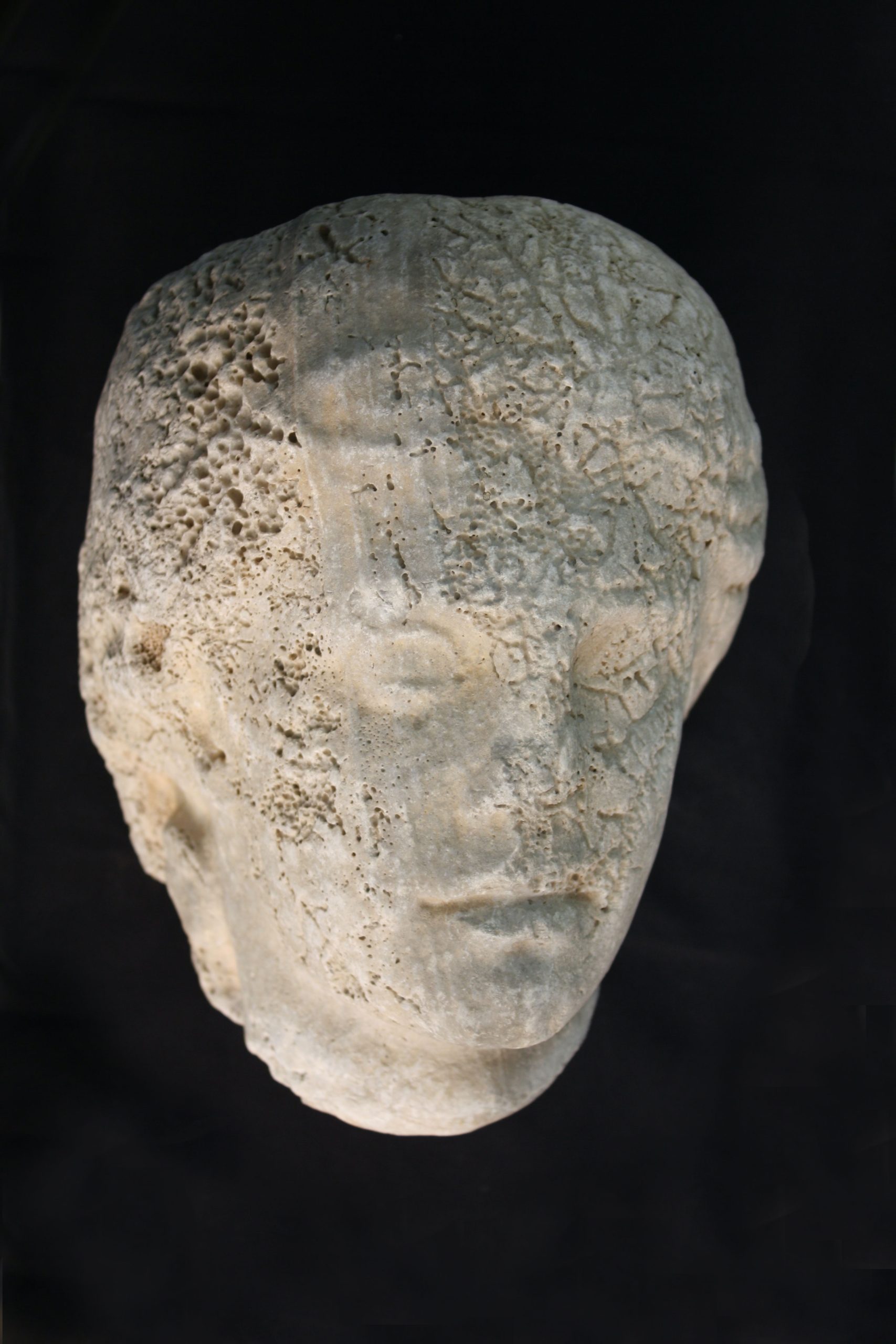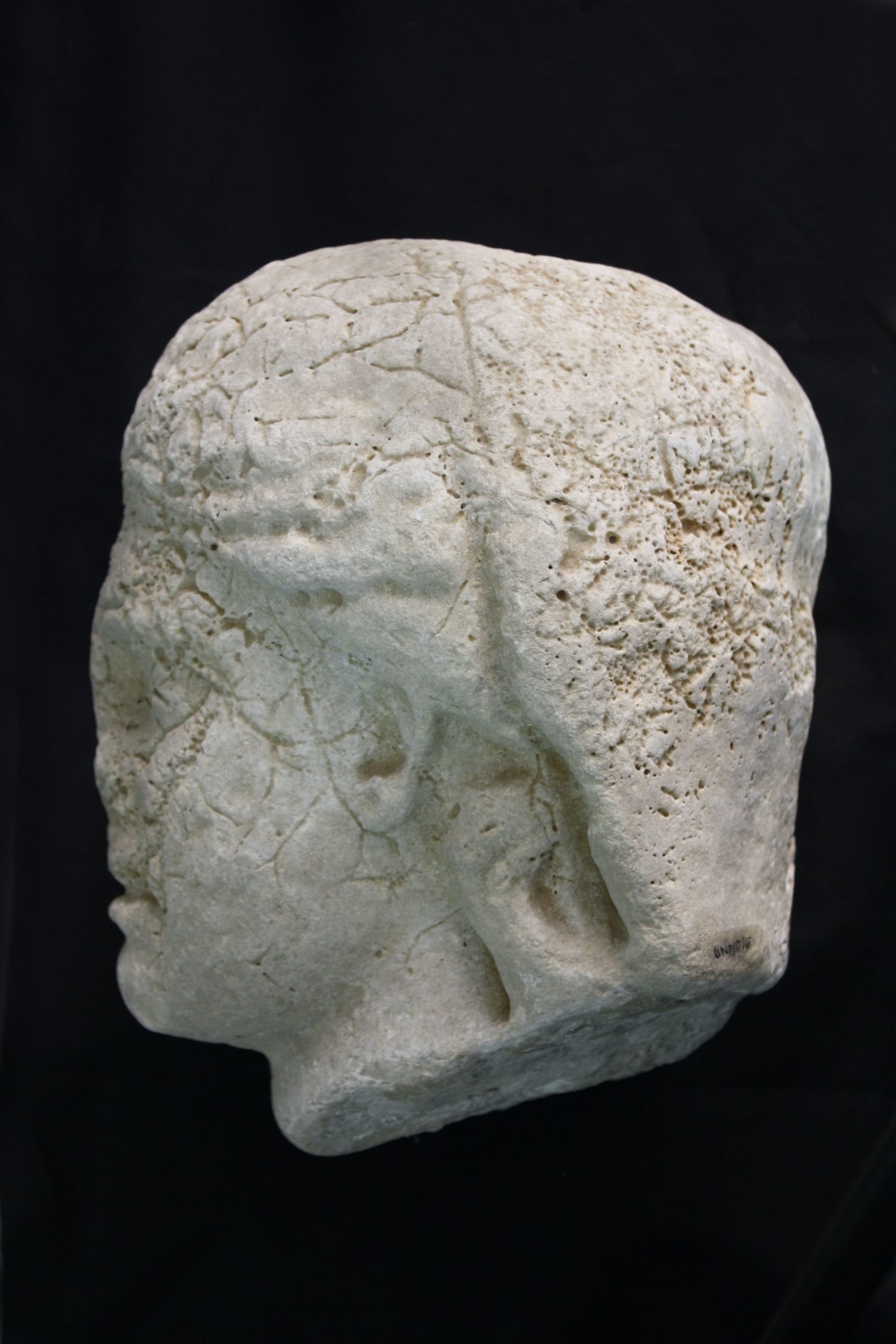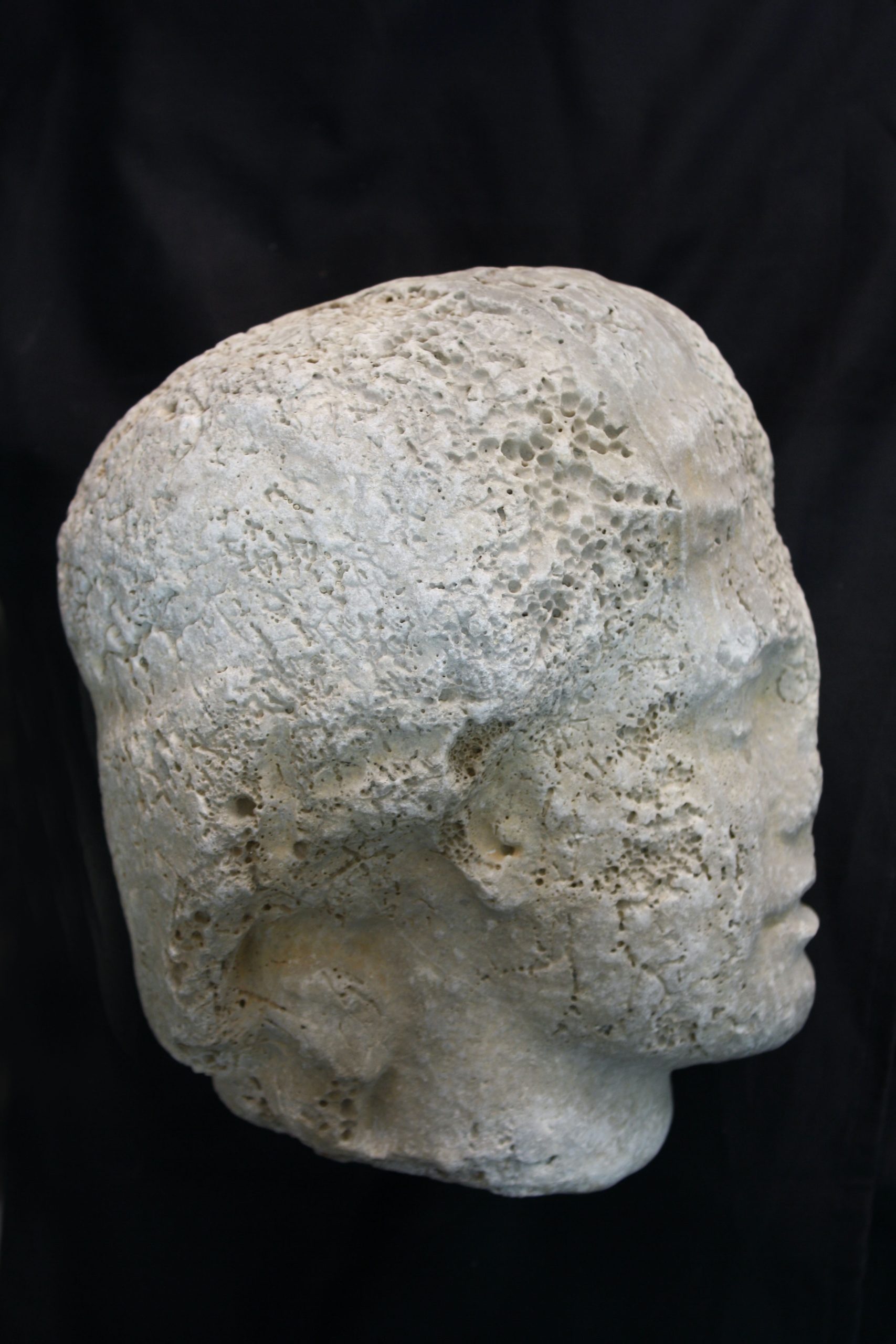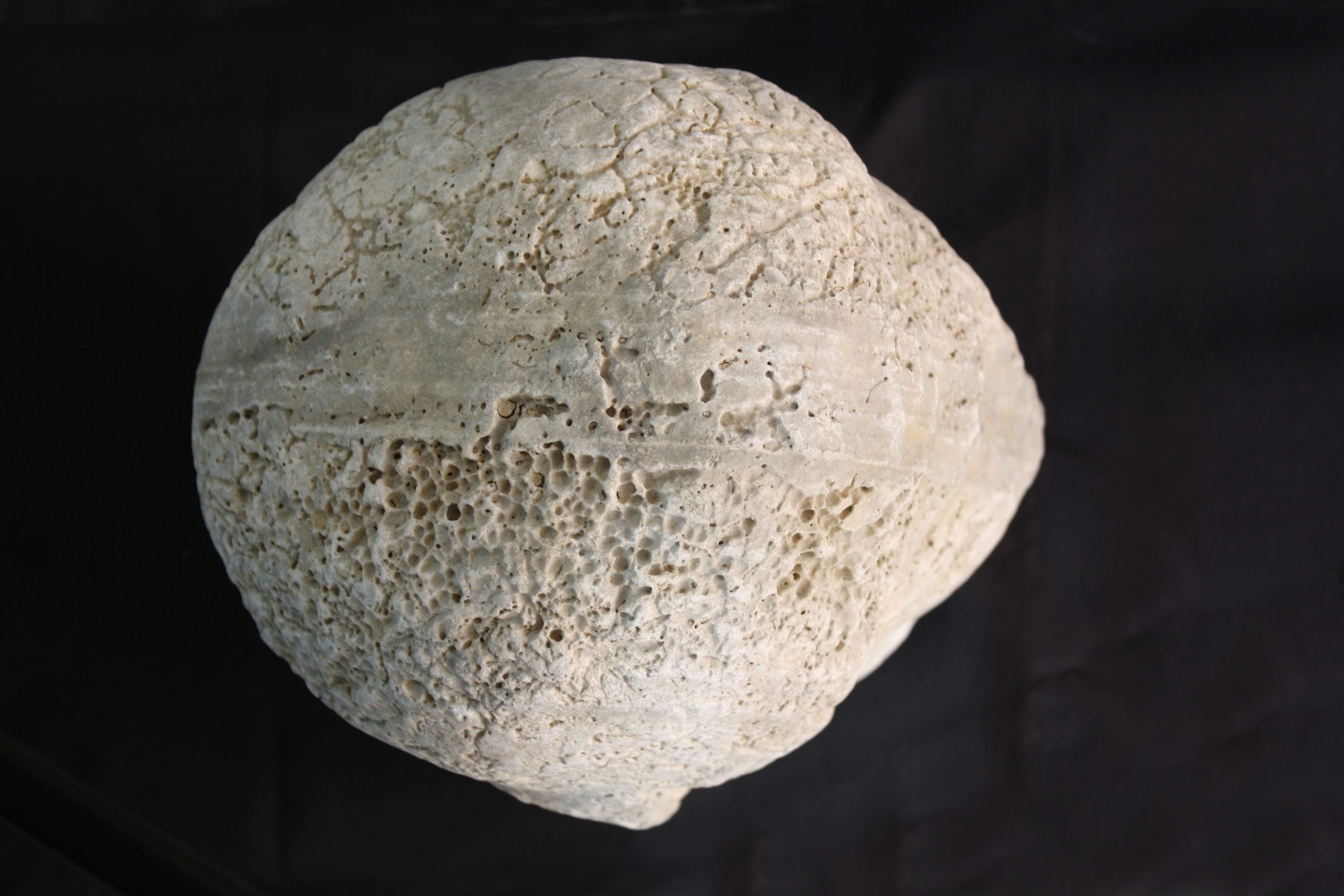Title
Veiled female head
Content
I.D. no: 21093
Dimensions: Max. H. 24.5 cm; H. of head 21 cm; Max. W. 18 cm.
Material: Fine-grain white marble, with greyish patina.
Provenance: From the Grand Harbour.[1]
Current location: National Museum of Archaeology, Reserve Collection
Condition:
The head is broken somewhat obliquely at the neck. It has been subjected to a number of breakages which probably predate its fall in the sea: some major, such as the completely missing nose and the ears, as well as parts of the hair strands below the ears; minor ones affecting the eyebrows and the left eye. The time spent in the sea-bed, however, has taken its major toll in the dark grey colour that covers the whole surface, and the numerous small holes and channels that deface the head in various parts, sparing only the lower part of the face and front of the neck. Signs of weathering on the whole surface, especially on the hair strands behind the ears. Similar sea-creature borings are found in most marble sculptural items from the Mahdia shipwreck,[2] and on the ‘Isis’ head extracted from the sea in Caesarea Mauritaniae (Cherchell).[3] A narrow plain strip that crosses the face vertically from the crown over the right eye and cheek and down to the chin seems to have protected the surface of the marble underneath it. A modern hole (c. 2 cm in diameter) perforating the bottom surface must have been intended for insertion of a metal rod.
Description:
The head, with its slight left inclination on the neck, undoubtedly belongs to a female figure wearing a veil, or some other headdress, that covers only the back, leaving visible the hair above and behind the ears. Although the oval face is full and rounded its construction is rather delicate with small almond-shaped right eyelids and slightly fleshy cheeks and chin. The mouth is slightly open with a rather pronounced lower lip. The surfaces that have been spared by the sea creatures’ eroding activity manifest very simple moulding with little depth of relief, as indicated by the few thick hair strands that survive to frame the face.
Discussion:
A similar veiled figure comes from the Acropolis of Athens,[4] but its hairstyle at the front, as well as the style and general treatment, which would take us back to the mid-5th century BC, is very different. The style and iconography of the Marsa head place it rather within the context of post-Praxetelian Greek sculpture and some similarity is observed in the female head forming part of a double-herm in Berlin.[5] The latter, however, lacks the veil. Behind the temples the hair of the Maltese head seems to be made up in a manner similar to the ‘melon frizur’ that is common in Hellenistic female iconography. For the same hair-do and for a number of other features, such as the construction of the face and the treatment of the eyes, it can be compared to a similarly damaged head from the Mahdia shipwreck.[6]
Although there do exist portrait representations of semi-veiled women with similar hairstyles, such as the gold decadrachm of Berenice II in Boston,[7] the generic and somewhat idealised features of the Malta head seem to exclude portraiture. They rather suggest an identification with a veiled divinity, perhaps a Demeter, like that of Knidos, which shows similar horizontal striations in the hair in front of the veil.[8]
The drill work visible behind the neck, also faintly perceptible in the hair, suggests a 2nd century AD copy of an early Hellenistic type.
Bibliography: (previous publications of item):
Vassallo 1965: 6, no 72: ‘Busto di statua tratto dalla melma nel nuovo porto’. Ashby 1915: 29: ‘harbour extension work of 1877 a damaged female head (Valletta Museum, no 60)’. Zammit 1919: 25, no. 113: ‘portrait of a lady; the marble is finely pitted … embedded in mud of the Marsa’. Bonanno 1971: 41-44.
[1]Vassallo 1865: 6, no 72: ‘dalla melma nel nuovo porto’; Ashby 1915: 29: ‘harbour extension work of 1877’; Zammit 1919: 25, no. 60: ‘embedded in mud in Marsa’.
[2]See von Prittwitz und Gaffrun, v. 1994; 1998.
[3]Landwehr 1993: 71, no 51, pl. 71.
[4]Dörig 1975: no 243.
[5]Blümel 1938: V: 9, no. K206, pl. 20.
[6]Fuchs 1963: 36-37, no 46, pls 56-57.
[7]Bieber 1961: 91-92, fig. 344. The same melon coiffure is worn by a female portrait head from Cyrene (Bieber 1961: 92, figs. 346-47).
[8]Smith 1900, II: 203-204, no 1300, pl. 24; Bieber 1961: 29, figs. 70-71.




